Simplicity Coimbatore, East Indian bottle masala </a
There seems to be some sort of magnetic attraction to masala mixes in my home because I have another special one to share with you this week.
A few weeks ago while watching Maria Goretti’s cooking show featuring her mum , she mentioned using an East Indian bottle masala for her chicken curry. I find her show rather endearing because she has the most charming smile and showcases her videos without editing out the mistakes.
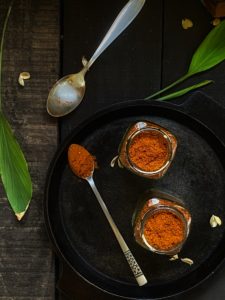
In the midst of cooking the curry, out of this large bottle came a generous spoonful of masala which went into the pot, bubbling away on the stove. The only prior reference to East India I remember hearing was about the British East India Company.
Naturally I was curious about this bottle masala and to see if we could make it. Before that here’s a little info about why they call themselves “East Indians”. Somewhere around the 16th century because of the Portuguese influence a large portion of Maharashtrians had converted to Christianity. When the British arrived and offered lucrative jobs for Indians with a knowledge of English , the people who lived in Bombay found themselves best suited for the same.
Families with surnames like Braganza, Rodrigues, Pereira, Ferreira , Machado , D’Souza etc formed a large part of the people from Bombay who were agriculturists. In order to differentiate themselves from migrant labour from other parts of the Konkan belt, they referred to themselves as East Indians.
The “East Indian’ cuisine is said to be a fascinating mix of breads (fugia), sea food and all sorts of produce that was grown on the farms. It’s hard to imagine Bombay being covered in agricultural land now but history talks about acres of coconut groves, banana plantations, cotton fields and lush green cover.
The East Indians are the Roman Catholics of Bombay . They wanted very much to isolate what was special about their community from the other Roman Catholics who came from Goa and Mangalore to settle their roots down in “The City of Dreams”.
After reading extensively about the East Indian bottle masala one comes to the realisation that no two recipes are the same. The are a whole lot of spices which are familiar just as there are those which I had to look up online and in books because I had never heard of them before.
The search alone was exhausting and somewhat diminished my eagerness in trying to make this bottle masala at home. After a couple of days spent focusing on other things, I went back to look at the ingredients listed on each of the East Indian bottle masala recipes. In doing so I chanced upon a youtube video of Maria Goretti (again) demonstrating on how to make the East Indian bottle masala. Of all the recipes, hers seemed the easiest and most doable.
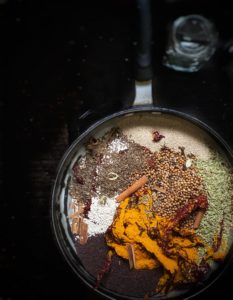
Hesitation struck again when I read another article which said that an East Indian bottle masala can have as many as 20 upto 32ingredients. Maria’s version has ‘only’ 13 ! After flexing my eyebrows over it and adding to the frown lines on my forehead I decided to give it a try simply because there was no point in not trying…right ?
After all I have no idea where to go looking for things like mugwort, tirphal and naikaiser. Have you heard of these ingredients before ? Mugwort is apparently a weed which is popularly found in Europe. Tirphal is another name for the Szechuan peppercorn and Naikaiser is the unopened bud of a Sri Lankan flowering tree. This proves beyond a doubt that the soil in Bombay was extremely fertile because all of these ingredients were easily available back then, in Bombay.
Under ordinary circumstances I may have managed to source some of these ingredients, at least the peppercorns for sure, but not now ! Thankfully Maria’s recipe asked for none of these rare spices.
The way the East Indian bottle masala was made, traditionally ,was by letting the different spices dry in the sun for a few days. Since it was made to last upto 6 months, the quantities laid out to dry were far from little. This process was done in the summer months. The spices were then put into large wooden drum like containers and pounded with long sticks until it turned into a fine powder.
The best way to replicate that flavour would be to dry roasting the spices on very low heat until they release the individual aromas and come together. This was a process which I did enjoy a lot despite not having some of the ingredients. The aromas when 13 different spices roast on heat is very different from just roasting the usual garam masala spices. This bottle masala has black cumin ,sesame, fennel ,coriander, cumin, turmeric, cloves, cardamom, poppy seeds ,cinnamon ,2 kinds of dried red chillies and mustard seeds. So there is a mix of fragrances which the smoke arising from the heated pan throws up. There is a sharpness ,possibly from the turmeric because there is quite a lot of it, then a mix of coriander and cumin until it all gets mingled in a scent which to my surprise was more kind of mild than overpowering.
To do the roasting properly it is best to take a wide pan which allows for enough room for properly tossing the ingredients so that each and every bit heats up. I kept picking up a few spoons of the mix every now and then to just give it a light touch to check if the heat had dispersed evenly. Later on I did think that maybe I should have added some peppercorns and mace but since this was the first time I was making it, I did not want to tamper with the specific ratios provided. The recipe was given in grams and we weighed it out carefully.
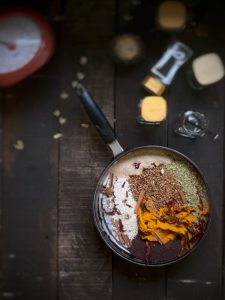
Interestingly, this particular version did not contain wheat or chickpeas which are present in some of the other bottle masala recipes. Maria did also mention in her video that she had robbed this recipe from her mother and aunts and hoped that nothing was left out !
It is called a bottle masala because the masala powder was stored in dark coloured beer bottles .The masala was packed tight so that no air would get in and turn it rancid. This recipe is enough to fill about 3 medium sized glass bottles and would maybe last for a couple of months.
The East Indians use it generously to flavour any dish from vegetables and lentils to fish and meats. History states that before they became agriculturists they were in fact nomads. I can well imagine them, travelling at will, bottle masala safely tucked away in their belongings. This one masala forms the basis for so many of their dishes. Their cuisine is more flavourful than spicy. That’s exactly how I would best describe the taste of this East Indian bottle masala.
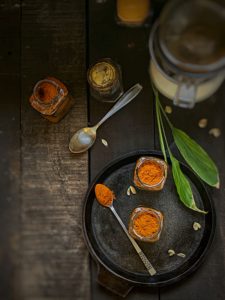
Recipe from Maria Goretti
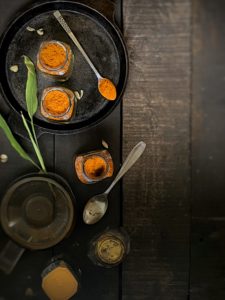
East Indian bottle masala
Bedgi chillies-25 gms
Kashmiri chillies-25 gms
Turmeric -90 gms
Coriander seeds-60 gms
Cumin seeds-28 gms
White sesame-20 gms
Khus khus-20 gms
Fennel (saunf)-15 gms
Mustard seeds-50 gms
Sha jeera (black cumin)-5 gms
Cloves-10
Cardamom-5 gms
Cinnamon-5 gms
Take a big pan and dry roast on very low heat ,slowly. Toss it gently back and forth. It will take about 20-25 minutes.
Let it cool completely. Pound it by hand or blend it in a mixer by using the pulse button. If you blend it on high speed, the heat will take away the nutrients and aroma.
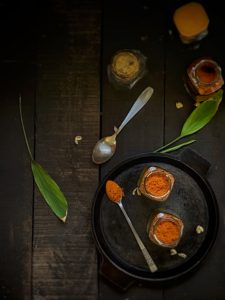

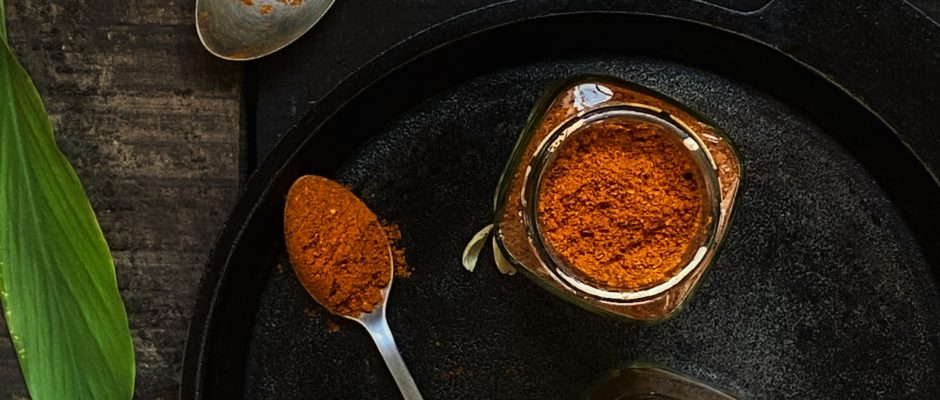
I am a genuine East Indian. I have my doubts about Maria Goretti’s East Indian claims. Till a few years ago, my part-time business was making and selling GENUINE East Indian Bottle Masala.. I had to give up when labour costs went high, and drying space in front of my residence, became a problem, on account of bike traffic. You can contact me, for the present time via email – [email protected].
We are all here to learn and grow from one another. I maybe a South Indian but my passion is to learn and share information about anything that interests me in food both as recipes or as ingredients. It is fascinating to read about the wonderful East Indian community.i enjoyed making Maria’s recipe and she says that each family has a special recipe. Wishing you the best. Take care.